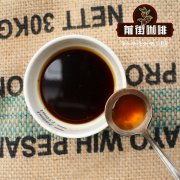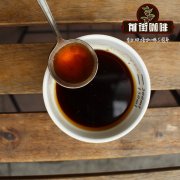What are the characteristics of Latin American coffee? How can Latin American coffee taste good?

Professional coffee knowledge exchange More coffee bean information Please pay attention to coffee workshop (Weixin Official Accounts cafe_style)
Coffee growing conditions
Due to the main geographical factors: latitude, temperature, topography, rainfall, sunshine and other effects, forming a different distribution of coffee producing areas on various continents. Central and South American and African countries match the climate and terrain of the region, so that different varieties of coffee can be cultivated at the same latitude and altitude, and some countries have even become synonymous with mainstream coffee in the world. The distribution of coffee production areas is also closely related to the eating habits of local residents.
Global coffee map
Apart from the history of coffee, the most practical information is to introduce the distribution and origin of coffee directly.
The tropics and subtropics, centered on the equator and about 25 degrees north and south latitude, are the most suitable areas for coffee cultivation. However, good trees do not grow anywhere in this region. The three major coffee growing regions falling within this zone are Asia-Pacific, Latin America and Africa. Coffee producing countries have about 60 countries, of which Central and South America accounts for about 60%, followed by Africa, Arabia accounts for about 30%, and the remaining 10% are distributed in Asian countries and most islands. These areas have one thing in common: temperature, annual rainfall are roughly the same, and there is plenty of sunshine and fertile soil.
The main cultivated species are Arabica and Robusta, of which Arabica accounts for about two-thirds of the world's coffee production. This kind of raw bean is not suitable for high temperature, low temperature, rainy and rainy environment, and belongs to oval flat raw bean; it is characterized by high quality and sweet taste. Arabica coffee beans, also known as Arabica small fruit coffee particles smaller, slightly oval shape, the central crack for the curved shape, size is more average, shiny color. Robusta coffee beans 'also known as robust coffee' most particles are large and round, the central crack is linear, mainly produced in Uganda, Cote d'Ivoire, Congo, Zaire, Angola and other countries.
Latin American coffee-growing regions refer to the countries of Central America and North and South America, as well as Mexico in North America. Coffee is often referred to in the industry as washed coffee, which is generally processed by fermentation to form its flavor (except for Brazil, which uses natural drying). Coffee beans produced in Latin America are balanced and mild in taste, with fresh acidity and attractive cocoa and nut flavors, well distributed.
The main coffee producing areas in Latin America are:
Brazil's Santos coffee is quite famous; Jamaica's most famous is the Blue Mountain coffee known as "coffee quality"; Mexico, Panama, Peru, Colombia, Guatemala, Costa Rica, Cuba, Venezuela, Nicaragua and other Latin American countries also produce coffee.
The coffee in this area is generally pleasant in aroma and has a very balanced flavor display, usually with a special cocoa flavor with a refreshing and lively acidity, which is a very pleasant single-serve coffee experience.
If African coffee has a good berry flavor and Asian coffee has a distinct herbal flavor, Latin American coffee is a more balanced variety.
Front Street suggested brewing data:
V60/88-90℃/1:15/time 2 minutes
Important Notice :
前街咖啡 FrontStreet Coffee has moved to new addredd:
FrontStreet Coffee Address: 315,Donghua East Road,GuangZhou
Tel:020 38364473
- Prev

Latin American Coffee Story the flavor characteristics of Latin American coffee how to drink Latin American coffee
Professional coffee knowledge exchange more information about coffee beans Please follow the coffee workshop (Wechat official account cafe_style) Coffee tree is a genus of Rubiaceae in botany. Coffee trees are native to subtropical Africa and some islands in southern Asia. In the 16th and 17th centuries, coffee was introduced into Europe through the merchants of Venice and the Dutch hegemony of the sea.
- Next

The difference between African Asia-Pacific Latin American Coffee how to drink Latin American Coffee
Professional Coffee knowledge Exchange more information on coffee beans Please follow the coffee workshop (Wechat official account cafe_style) about the sixth century AD, an Arab shepherd named Kaldi secretly observed the goats while grazing and found that they had eaten the red fruit of a wild shrub under the hillside and became extremely excited. The curious Caldy picked the fruit himself and found it muddy after tasting it.
Related
- What documents do you need to go through to open a coffee shop? coffee shop coffee shop certificate processing process
- How to purchase Coffee beans in small Cafe how to choose a suitable supplier for domestic Coffee supply Company
- How to drink Starbucks Fragrance White Coffee? how to make Australian White Coffee? what Italian coffee beans are recommended?
- The Story of Flora Coffee: the name of Flora Coffee Bean and the implication of the Flowers on Florna Coffee
- How much does a cup of coffee cost? How much is the profit of a cup of coffee? What is the profit of the coffee shop in a year?
- Yunnan small Coffee, known as "fragrant Coffee", introduces the characteristics of Alpine Arabica Coffee producing areas in Yunnan, China
- 2023 latest Starbucks full menu price list how much is a cup of Starbucks coffee what is better to drink the most popular hot and cold drinks recommended
- Starbucks different kinds of Coffee Price list Starbucks menu 2023 Top Ten Best drinks in Starbucks
- Starbucks Spring praise Comprehensive matching Coffee Bean theme Story Packaging implication and taste description
- The cost of a cup of coffee latte American coffee cost price and selling price

